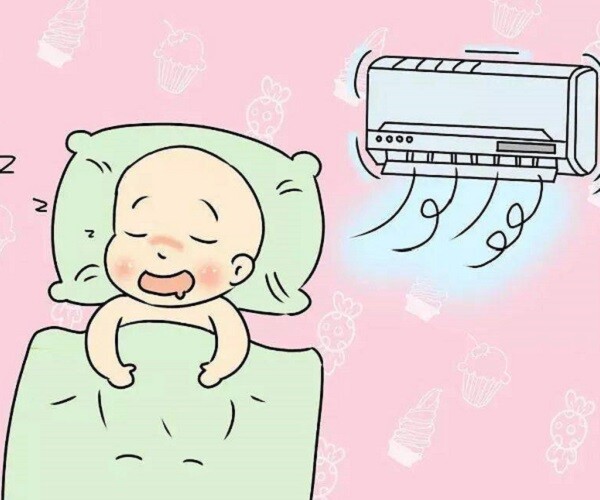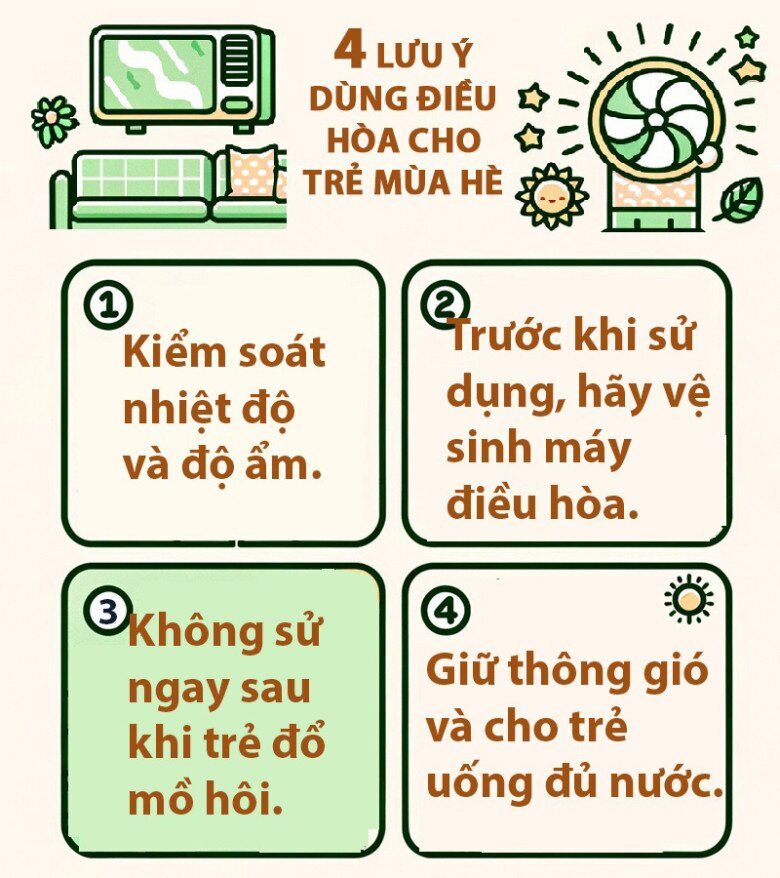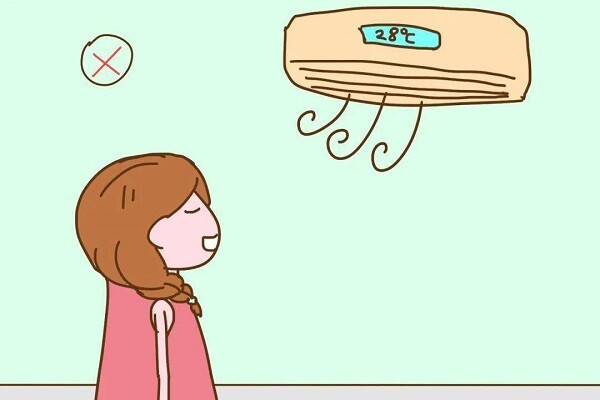Some parents believe that during the hot summer months, with temperatures sometimes soaring to 40°C, coupled with the fact that children are active and prone to sweating, it is necessary to turn on the air conditioning when they sleep.
On the other hand, some people argue that children have weaker immune systems. Using air conditioning frequently can lead to runny noses, sneezing, and even fevers or colds. Therefore, they believe that air conditioning should not be used when children sleep.
So, should air conditioning be used for children during the summer? And what is the appropriate temperature? Experts provide insights and guidelines on using air conditioning reasonably to reduce children’s minor illnesses.


Should air conditioning be used for children during the summer?
According to pediatricians from a hospital in China, parents should use air conditioning for their children during the summer. This is because, at this time, the temperature rises, and even adults sometimes cannot bear it. Children are more likely to feel hot and uncomfortable. Children have more sensitive bodies and a weaker ability to regulate body temperature, so it is necessary to maintain a cool and comfortable environment.
It is important for parents to note that air conditioning should be used correctly to achieve the best results. Lowering the temperature and humidity in the room creates a comfortable environment, helping to reduce allergies, prickly heat, eczema, and other diseases. A cool and clean space will help children fall asleep more easily and promote healthy development.

Air conditioning should be used for children in the summer, but it is important to use it correctly.

What is the appropriate temperature for air conditioning while sleeping during the summer?
In the past, many people believed that the ideal temperature for children was 26 degrees Celsius. However, according to pediatricians, during the day when children are awake, 26 degrees Celsius is comfortable and pleasant.
However, if children sleep during the day and at night, the temperature should be set to 28 degrees Celsius. This temperature is not too hot or too cold, and even if the child does not use a blanket, they are less likely to catch a cold or get sick. Maintaining a temperature of 28 degrees Celsius will help children sleep more soundly and reduce the risk of being affected by sudden temperature changes.
If the temperature is set to 26 degrees Celsius throughout the night, after 2 a.m., when the body enters deep sleep mode, children may feel cold. This can lead to restlessness, crying, or difficulty falling back asleep. Additionally, staying in a very cold environment can cause respiratory problems and make children more susceptible to illnesses such as colds or pneumonia.

The ideal air conditioning temperature for sleeping is 28 degrees Celsius.

How should air conditioning be used correctly during the summer?

Control temperature and humidity
As mentioned earlier, when children sleep at night, the ideal temperature for air conditioning in the room is 28 degrees Celsius. If parents are concerned that their children may feel hot and sweaty, they can adjust the temperature according to the child’s condition. However, it is important to adjust the direction of the airflow so that it does not blow directly at the child continuously.
It is important to note that after setting the temperature and airflow direction of the air conditioner, do not forget to adjust the humidity (usually to 50%). Children’s skin is delicate, and the stratum corneum is weak, with poor water retention capacity. If the humidity of the air conditioner is not set, the child’s skin may become dry or even itchy after use.
Therefore, the air conditioner in the child’s room should be set to a temperature of 28 degrees Celsius, humidity of 50%, and the airflow direction should be adjusted to avoid blowing directly at the child.
Ensure proper cleaning and maintenance of the air conditioner before use
Before using the air conditioner each summer, it is essential to remove, clean, and dry the air filter. Dust and bacteria accumulation inside the unit can easily cause skin itching or other symptoms.
In addition to cleaning the filter, the inside of the air conditioner also needs to be disinfected and cleaned. You can purchase specialized air conditioner cleaning products or engage professional services for thorough cleaning.
Generally, the air conditioner filter should be cleaned about once every two weeks, and the inside of the unit should be cleaned once a year.

Avoid directing the airflow directly at the child.
Do not use air conditioning immediately after sweating
Children are typically active and energetic, and they tend to sweat more during summer outdoor activities. When children come home sweaty, do not turn on the air conditioning right away. First, wipe their bodies dry, change them into clean and cool clothing, and then turn on the air conditioning when their body temperature has returned to normal.
Using air conditioning while the child is still sweating can easily lead to catching a cold. Similarly, when the child goes outdoors, turn off the air conditioning about 20 minutes before leaving the house to allow their body to gradually adjust to the outdoor temperature.
Ensure proper ventilation and keep children well-hydrated
If you keep the windows and doors closed for extended periods while using air conditioning, it can lead to poor air circulation and indoor air pollution. Therefore, it is recommended to open the windows for ventilation for at least 20 minutes after running the air conditioner for 3-4 hours. If children stay in an air-conditioned room for a prolonged period, ensure they drink enough water to avoid dry mouth.














